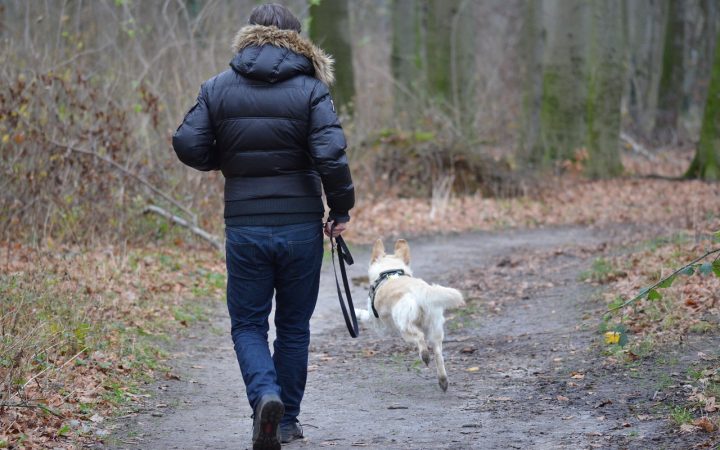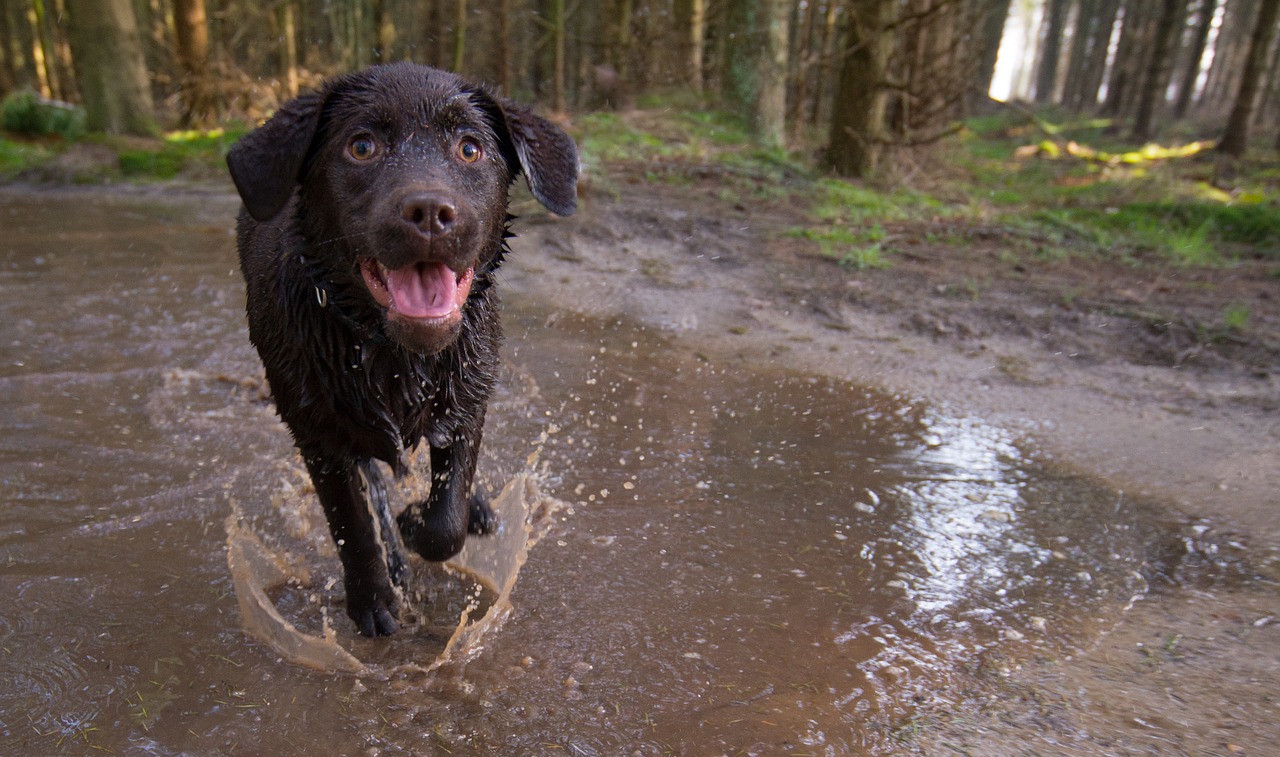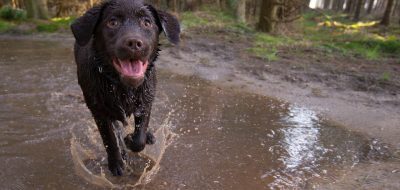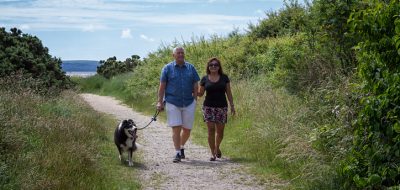Off-leash dogs — when can you let your pet run free?
A dog running wild and free in nature is a beautiful sight. But just because they can, that doesn’t necessarily mean they should. If you have a dog that loves to roam when you camp together, you may want to ask yourself: is off-leash dog walking in nature worth the risk?
Three Scary Risks of Off-Leash Dog Walking
There’s no denying that it’s a blast to take our dogs camping and watch them roam untethered through forests and across open countryside. Unfortunately this kind of fun can come at great cost. Before you free your dog from that leash, you may want to consider these three scary risks of allowing him to roam.
 Risk 1: Wild animals are always ready for dinner.
Risk 1: Wild animals are always ready for dinner.
Whether you’re in the desert, the mountains or the coast, wild animals don’t pay attention to boundaries. From coyotes that prowl the public trails in hillside neighborhoods to alligators that linger in lush wetlands near cities, predators are always around the bend and browsing for their next meal. Off-leash dogs of all sizes are easy victims for wild animals who view them as threats.
Risk 2: Parasites prey on curious noses
Few scents are more fascinating to a dog than the decaying corpse of another animal. When a dog runs off-leash and unsupervised, it’s far too easy for them dive, roll or burrow into their “treasure” before their human can put it to a stop. Making contact with dead animals turns the dog into an unwilling host to a parade of fleas, ticks, mites and other dangerous parasites that transmit infectious diseases like rabies, leptospirosis, hantavirus and even the plague.
Risk 3: Off-leash dog injuries are expensive and sometimes fatal
When a dog runs off-leash, the risk of injury is astronomical if you are incapable of running fast enough to steer your dog away from danger. It’s not just the risk of getting hit by a car, trampled by a moose or eaten by a bear. Other obstacles often cause serious injuries, such as: deep rodent holes that can catch your dog’s leg and shatter it to pieces, unfenced cliffs that an unsuspecting dog could fall from, and large, sharp protruding tree branches that can catch a dog’s fur and pierce vital organs.
The one thing you need for safer fun with your dog
The risks are obvious: are you still willing to take them? If not, don’t worry: your dog can still free-roam in the woods, on the beach and wherever you go camping together. All it takes is for you to get familiar with a training tool known as a “long leash.”
Long leash (or leads) are the answer to better, safer walking with your dog in the outdoors. These are not the retractable kind, but a 15 to 20-foot nylon or rubber flat leash with a handle on one end and a strong clip on the other for your dog’s harness. This type of restraint device enables your dog to explore greater distances as you walk together, while still allowing you some control over any trouble lurking ahead. Many great dog training articles have been written about the subject, just search for “long leash dog training tips” on the internet.
Veterinarians have endless war stories about dogs who did and didn’t survive off-leash catastrophes. When you add it up, off-leash walking in nature means running a huge risk of expensive and even deadly consequences. All it takes is one small investment in a long-lead to keep your dog safe and out of danger wherever you roam together.








